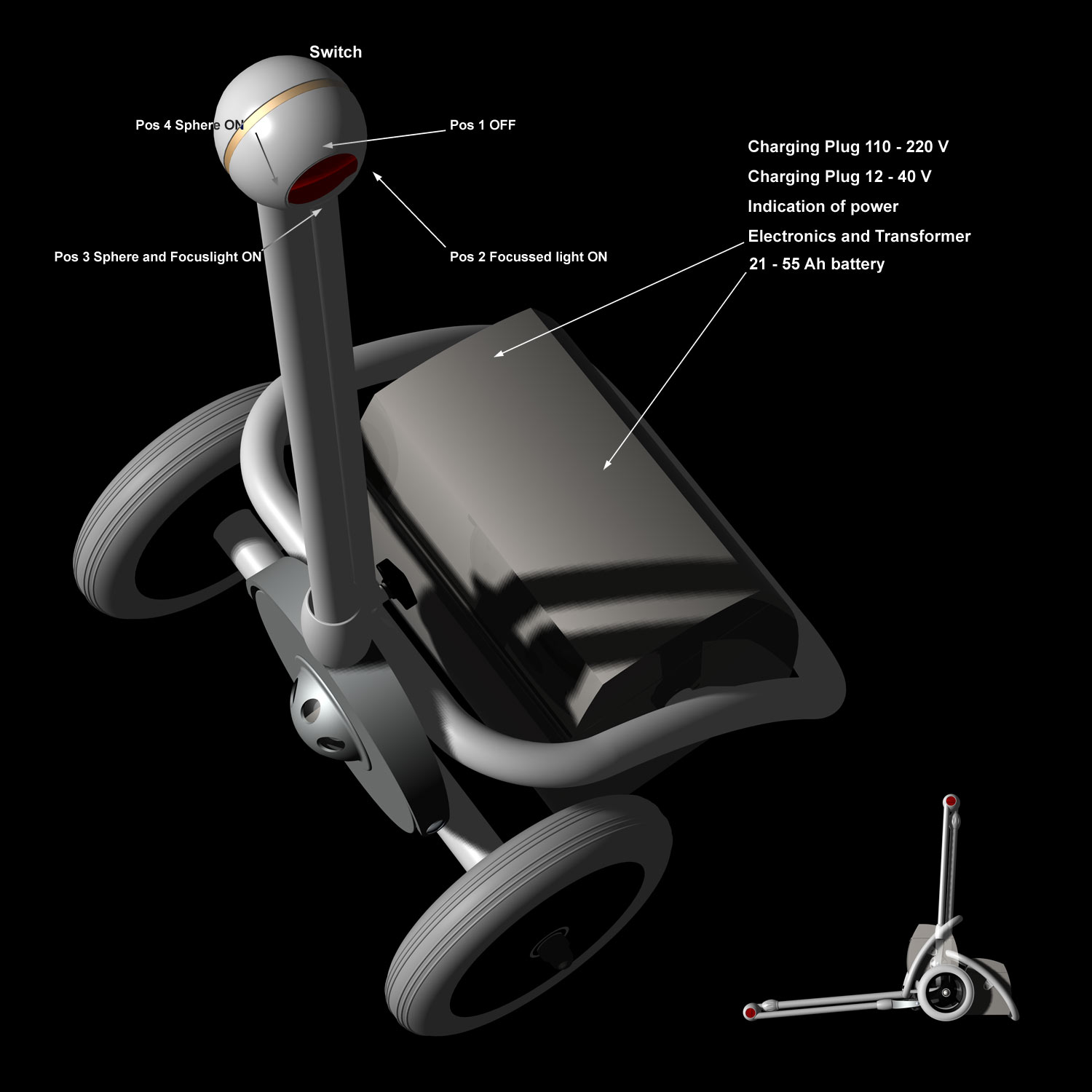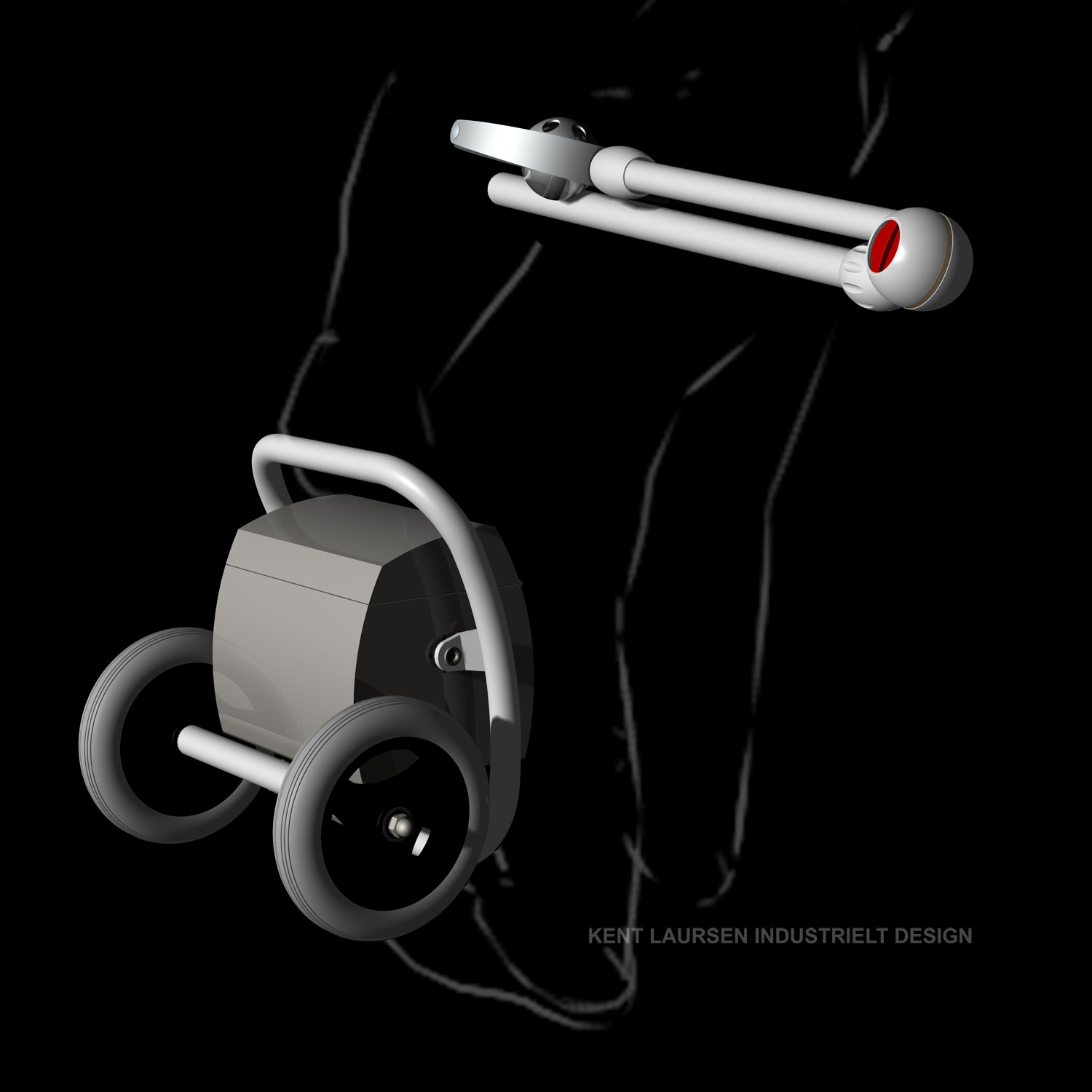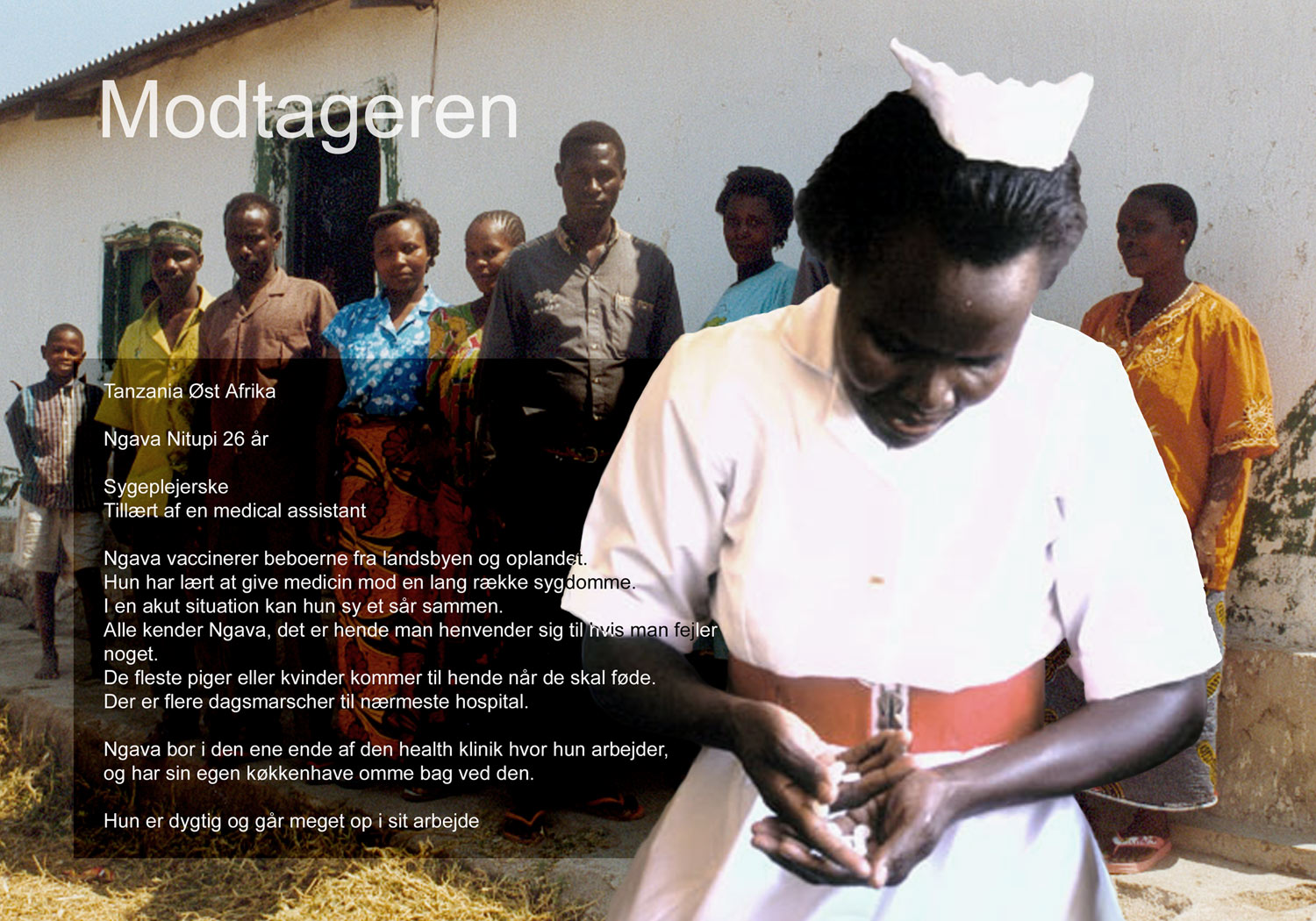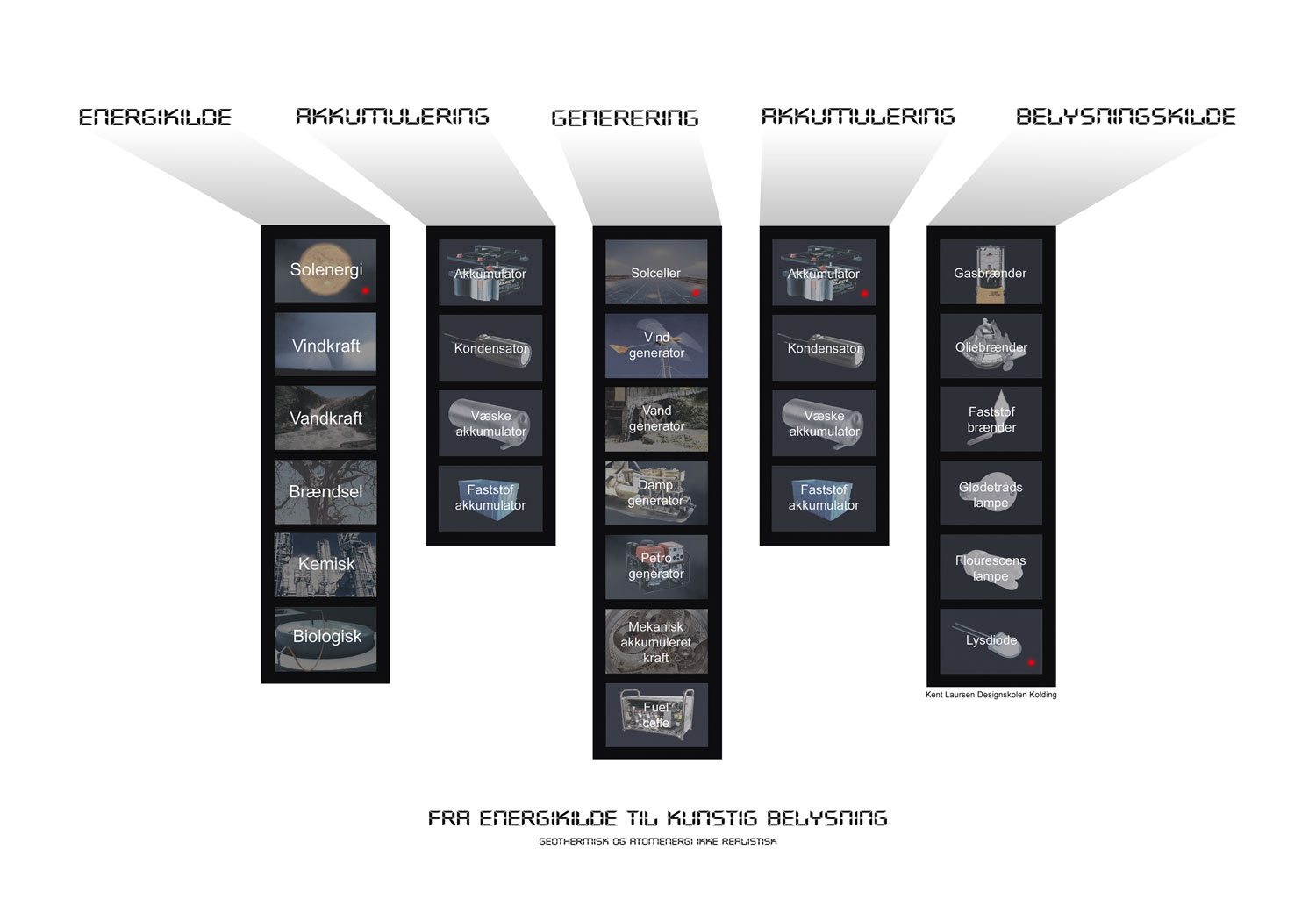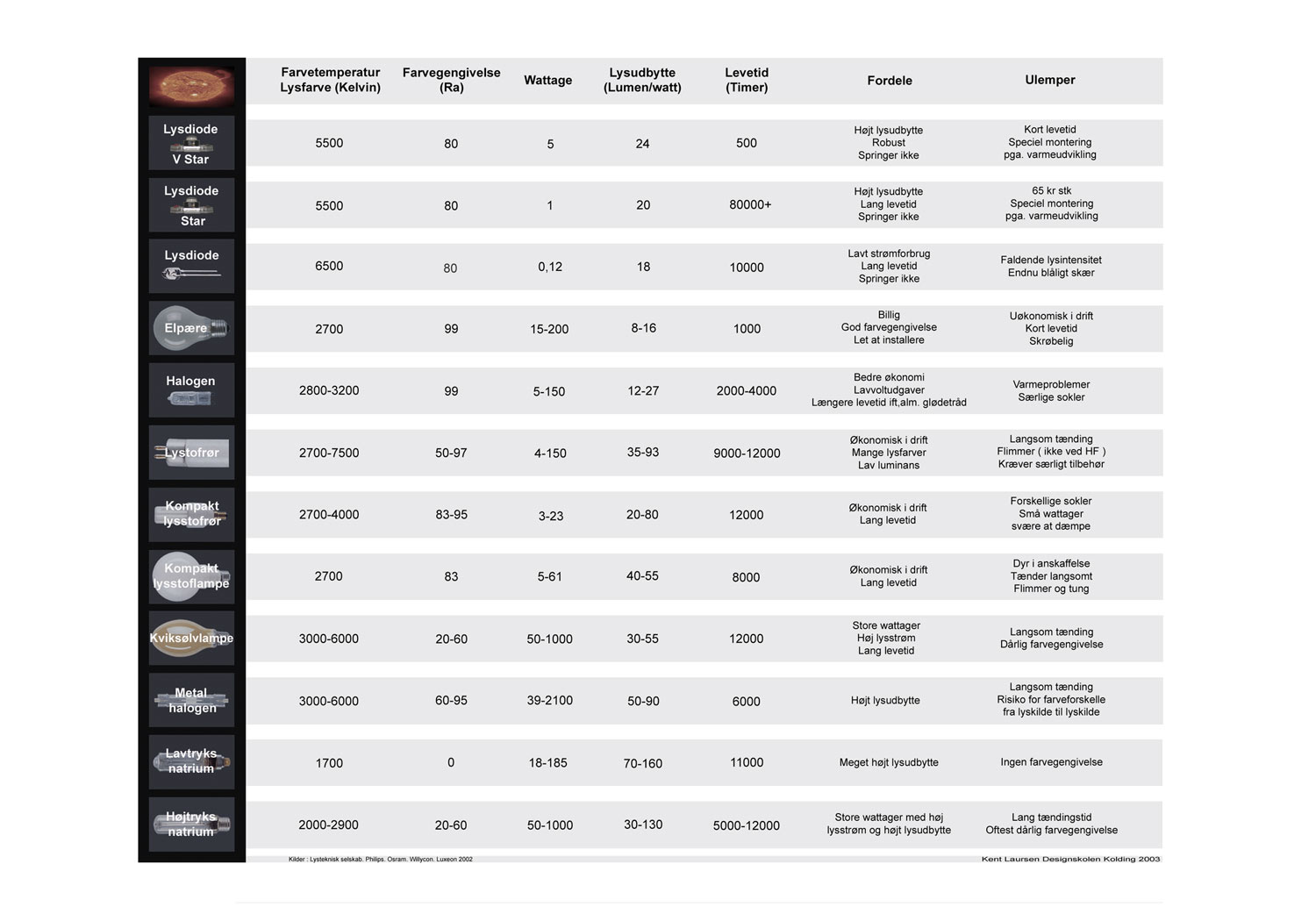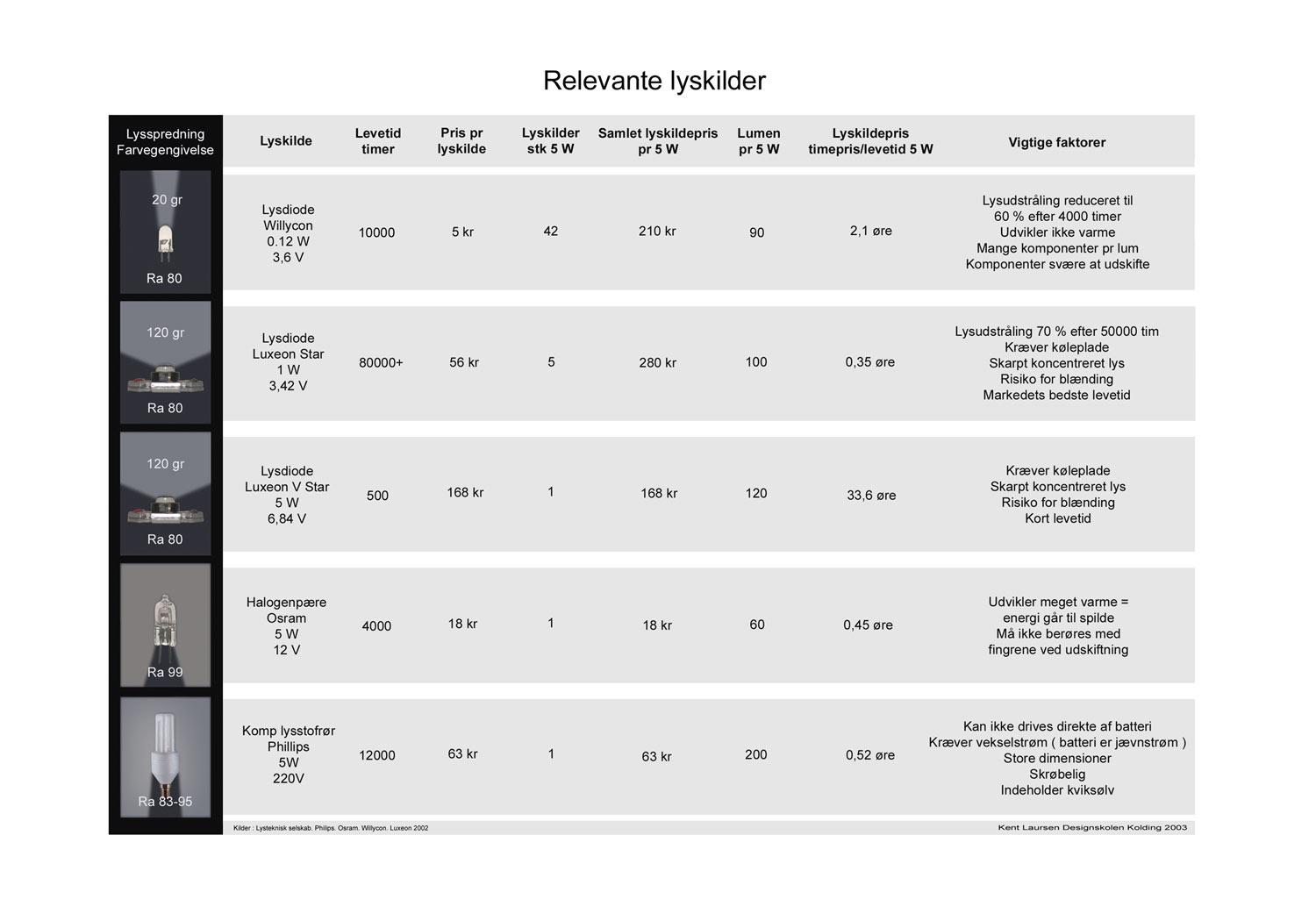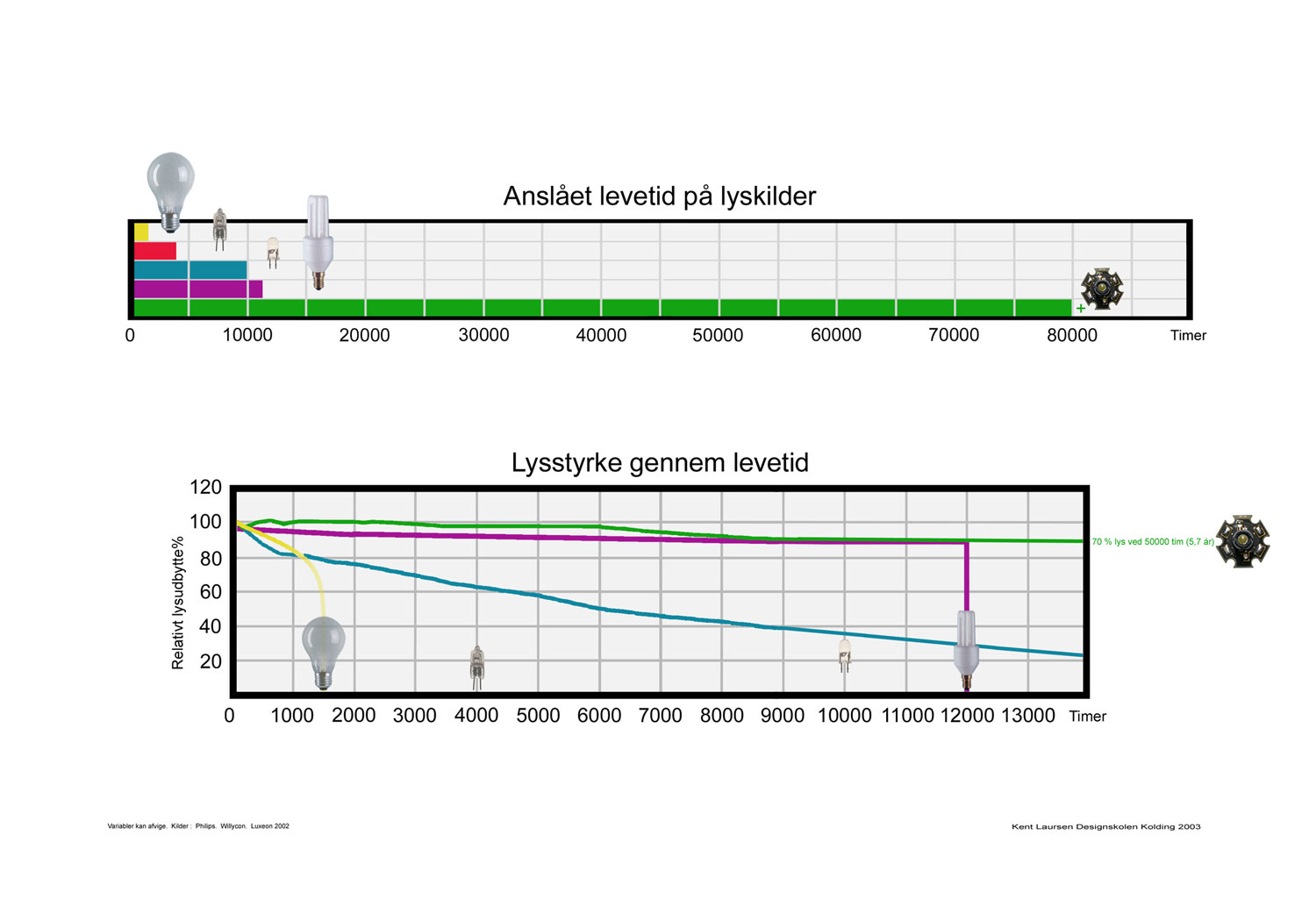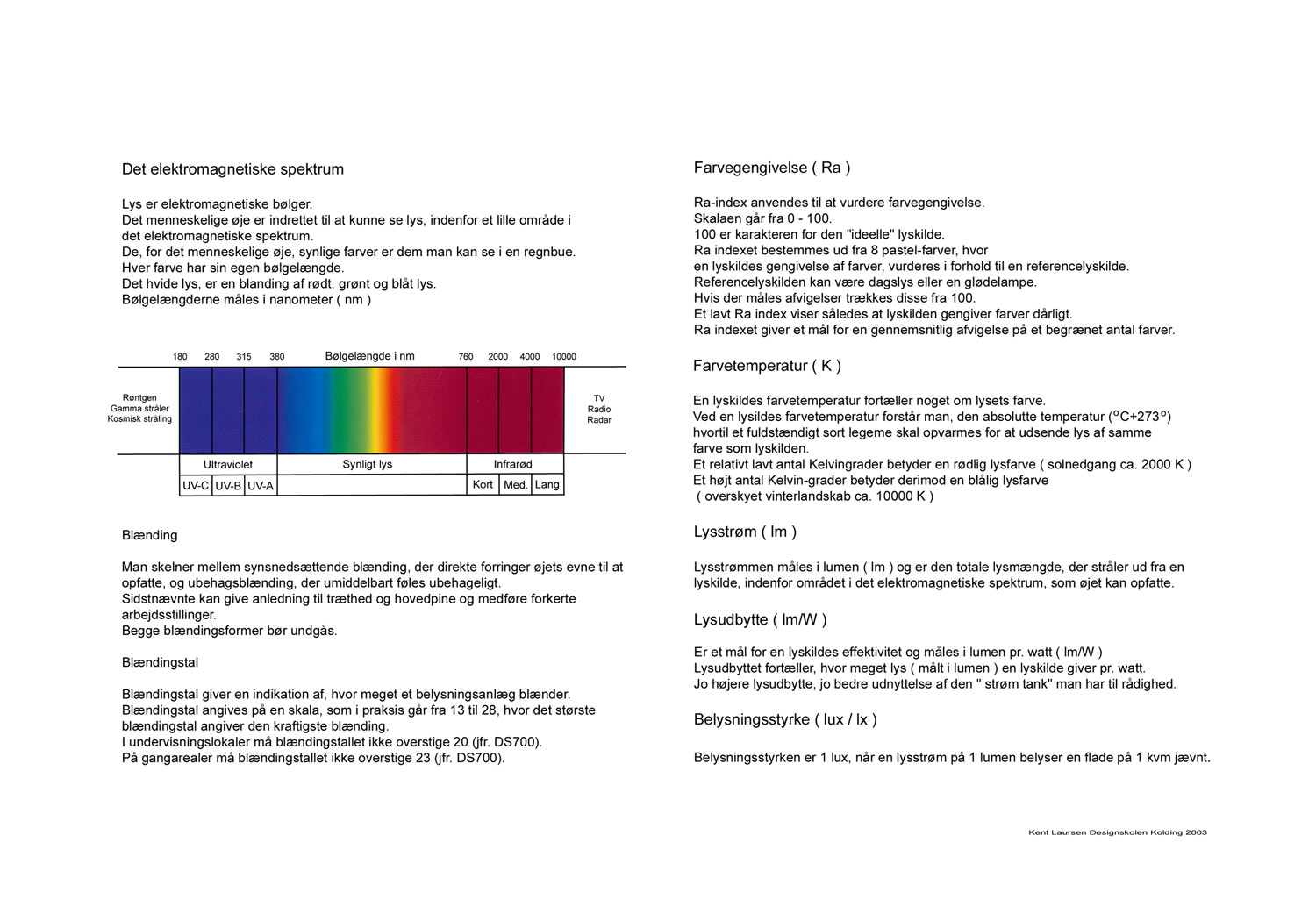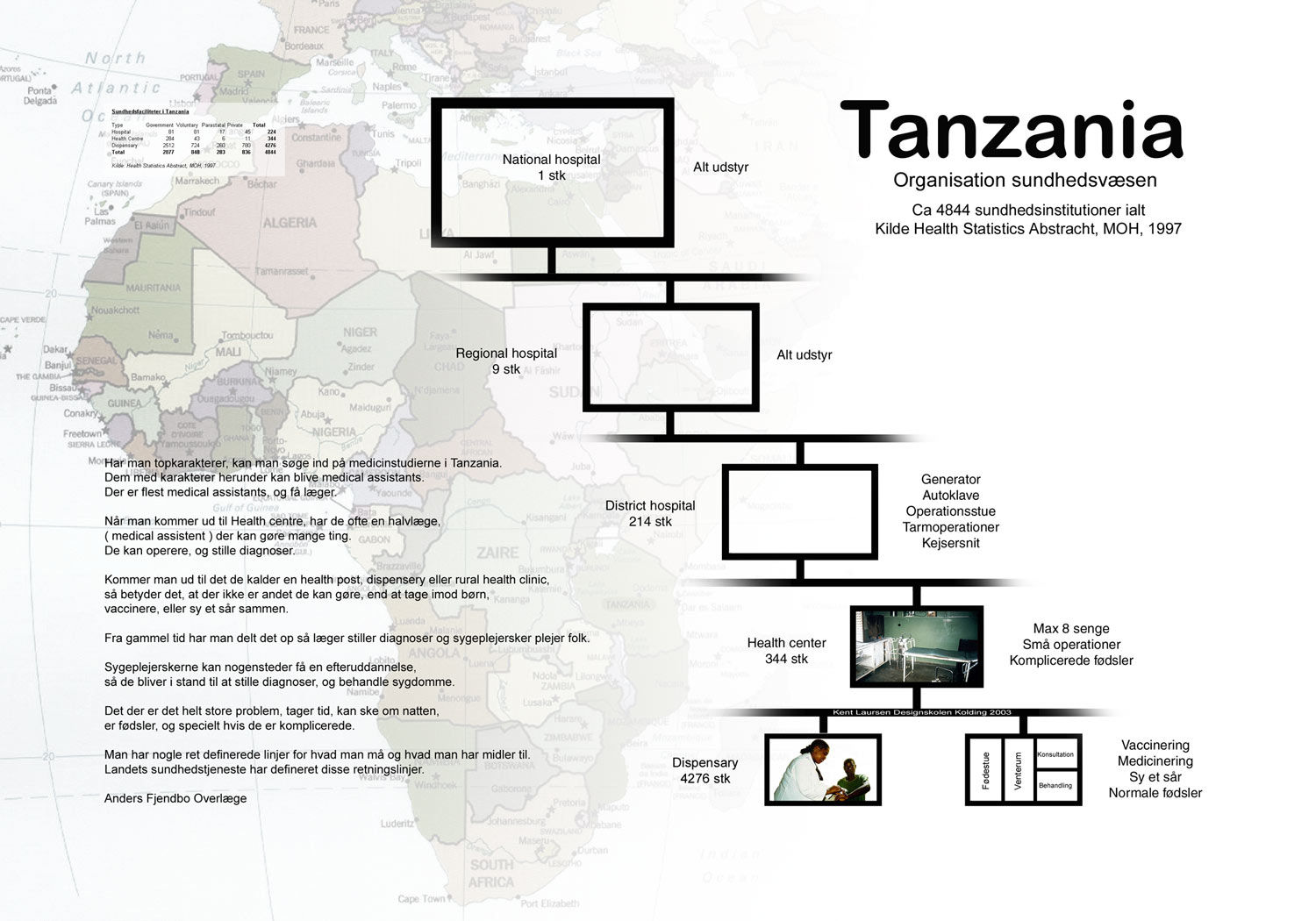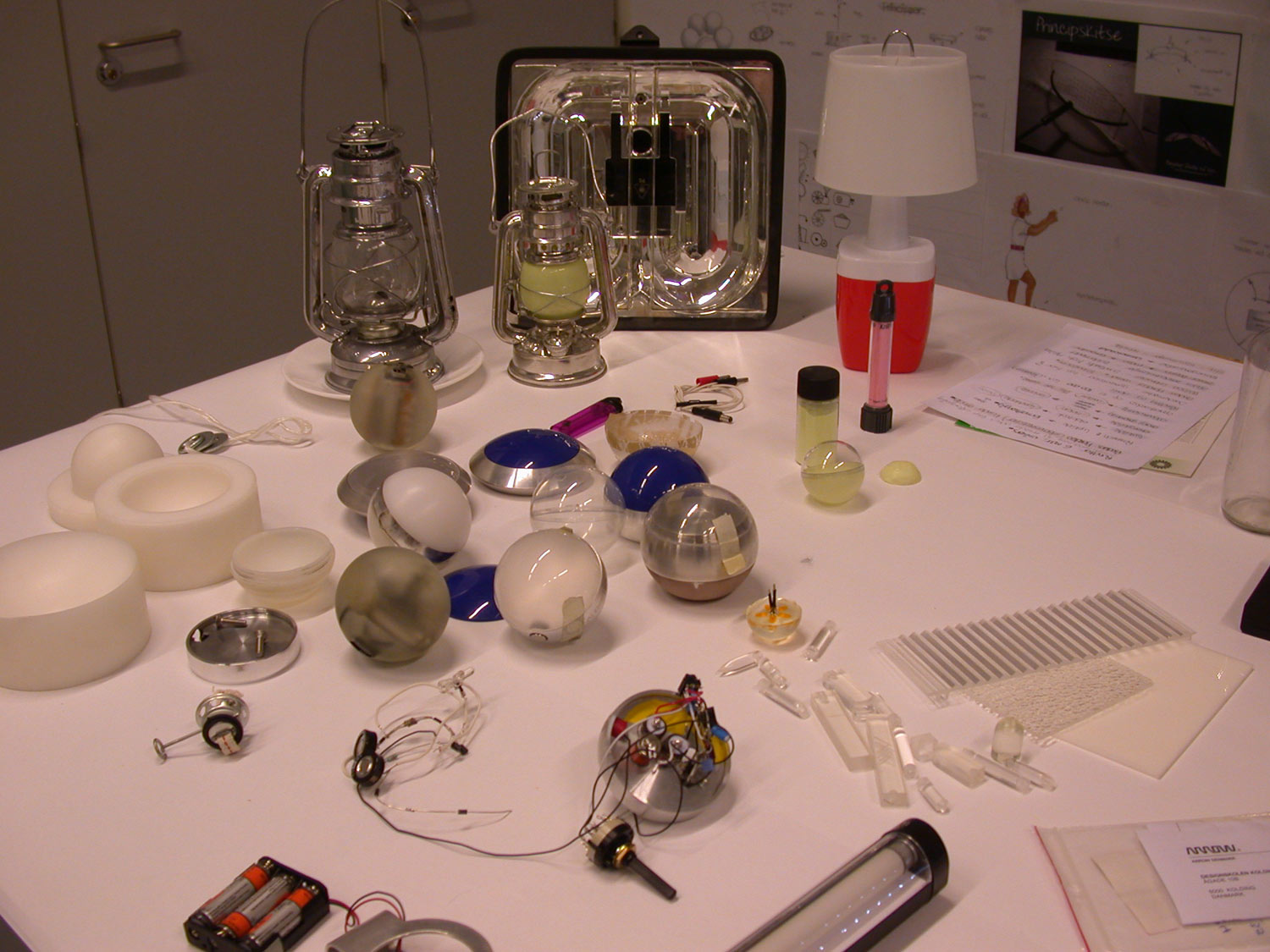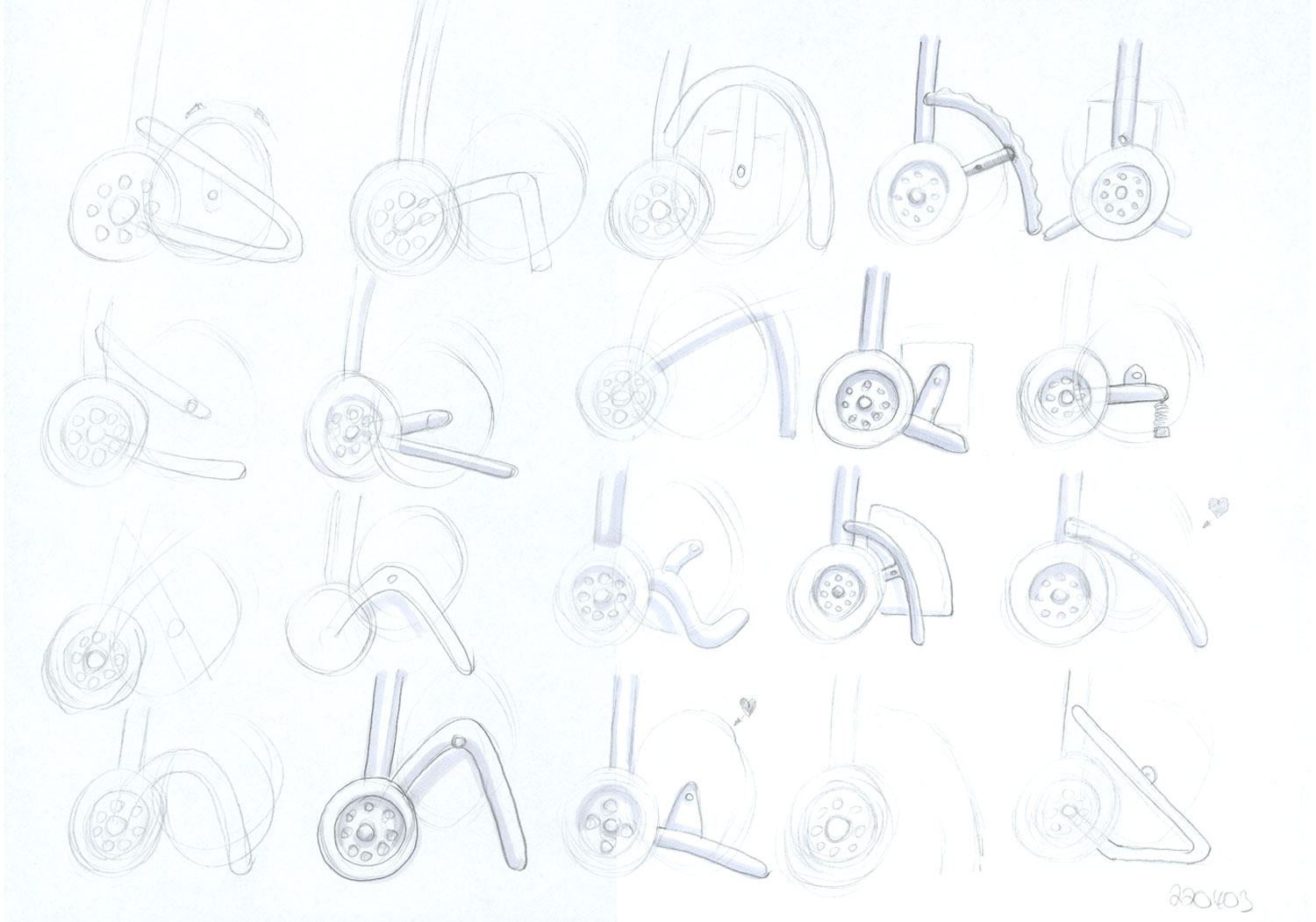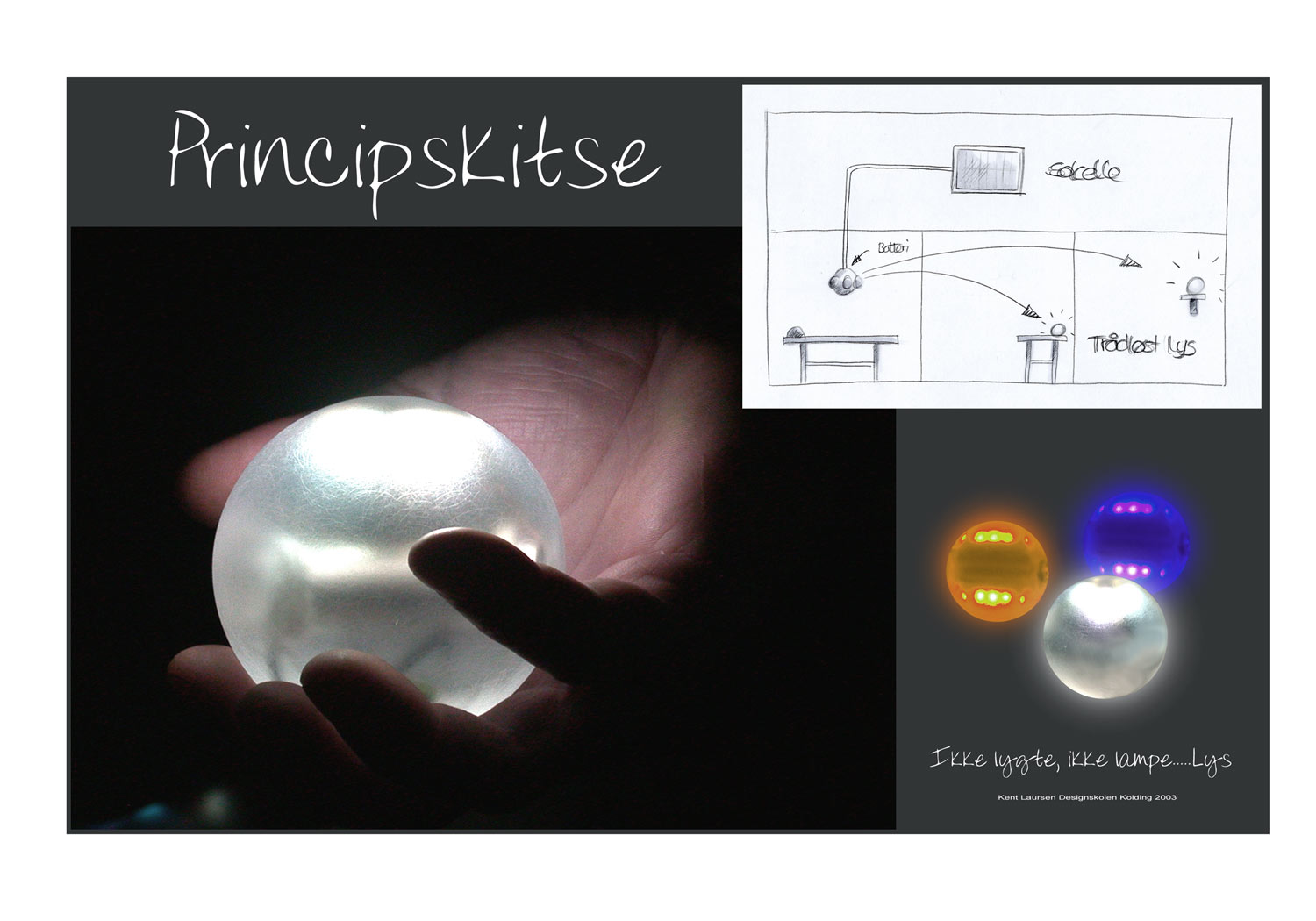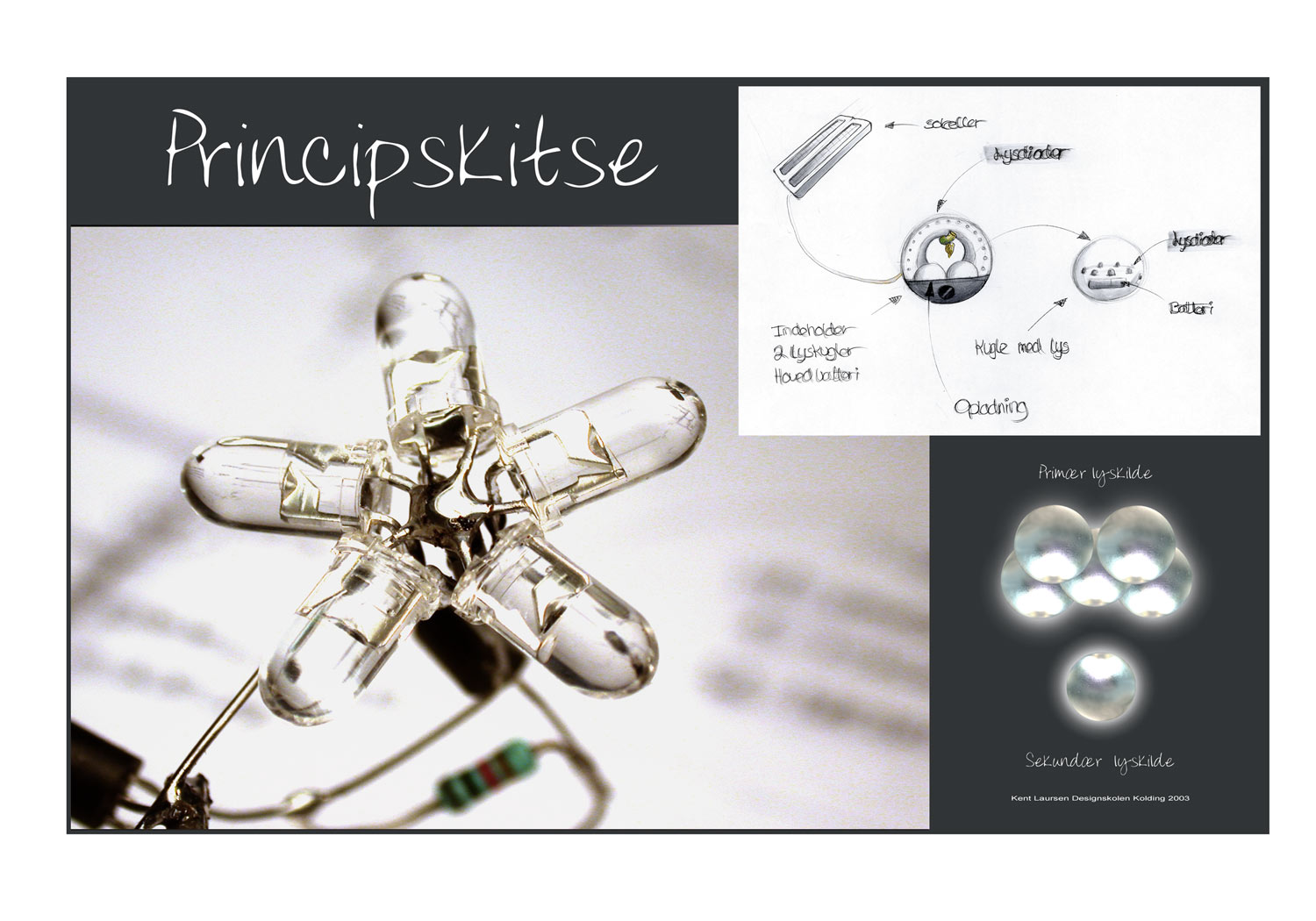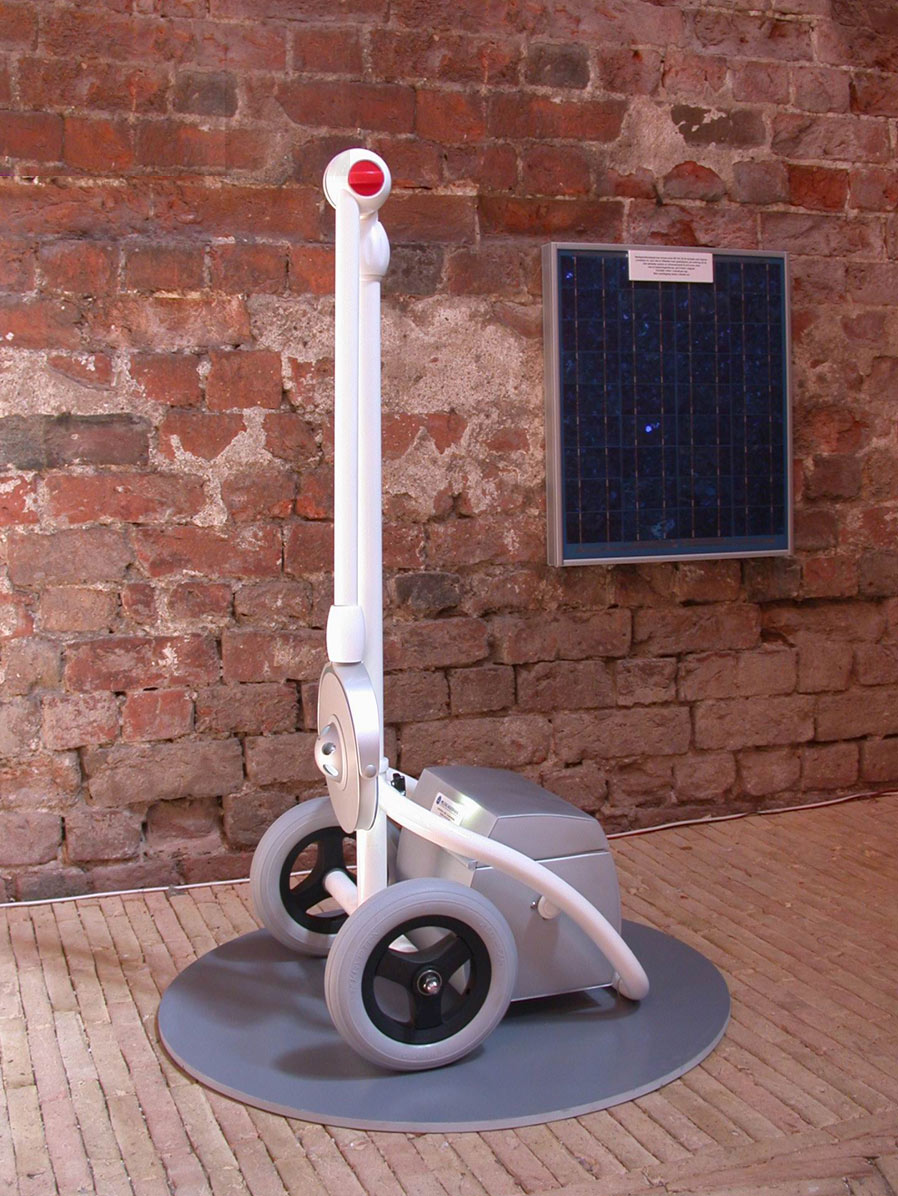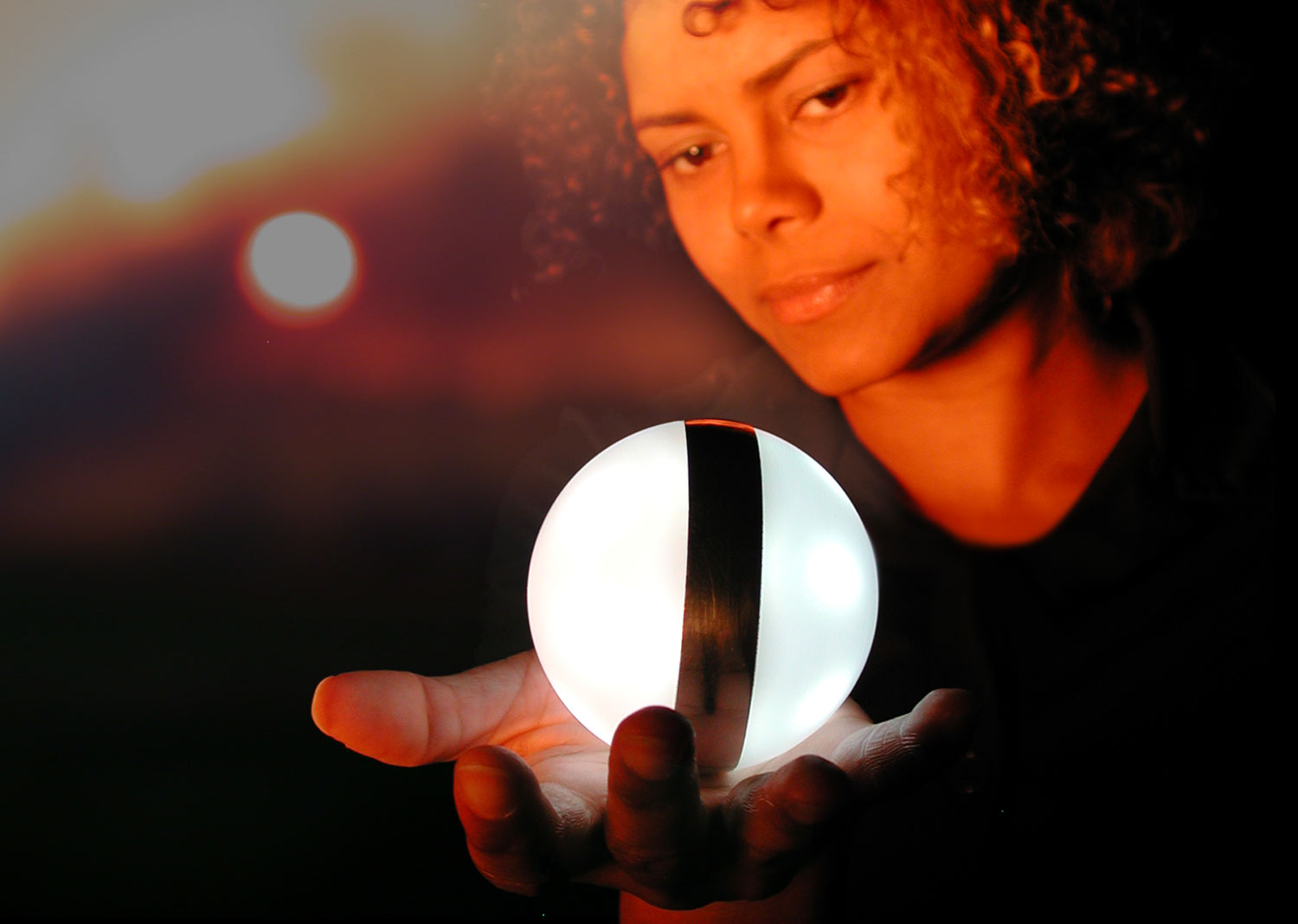
Solar Surgery Light
Her et eksempel på et produkt til 3 verdens lande. Udviklet i samarbejde med Jørgen Haurslev, Kolding Maskinfabrik og Dr.Med Anders Fjendbo Jørgensen fra Danmark og Dr. Wilson Kitinya fra Tanzania, og lyset er testet og godkendt af læger på Kolding Sygehus. Problemet med at mange kvinder eller alt for unge piger der dør under fødsler afledte dette projekt der handlede om at udvikle operationslys til områder uden fast elforsyning. Selvom der er elforsyning i klinikker eller hospitaler er den ikke nødvendigvis stabil. Så produktet ser ud som på billedet og der hører en 2o W solcelle med. Så har man konstant lys, da der er et autobatteri til at lagre solens energi.
The concept
Research
The Product
Alternatively, the system can be put to an upright position and used as a standard lamp.
By charging the battery for 6 hours by grid electricity or by a solar panel, sufficient energy is provided for the lamp to operate for 28 hours. The LED lights cannot blow up, as there is no filament. If used every night, the expected lifetime is 20 years, which is just as long as the warranty period for solar panels. During its lifetime, the lead-acid battery needs to be replaced several times depending on environmental factors such as humidity and temperature.
The primary unit

The secondary unit
The future
To provide poor rural clinics with this emergency light, the “light ball” in its poetic design may be promoted as a cosy lamp for the Richer World, floating in the swimming pool, lighting up a garden path or providing safety light at the pillow of a child. At an exhibition in Kolding children found the “light ball” extremely enchanting. A similar design might be used with flashing red or blue lights as warning light at accidents.
The LED lights are presently being developed and very soon they will be twice as powerful. Consequently the future will experience many new applications for use in many new areas.
Spot light for surgeons
The concept
The light is used for examinations and surgery providing effective and reliable light in rural clinics and remote areas. It works around the clock and runs on different energy sources including solar energy.
Research
Dr. Anders Fjendbo Jorgensen and medical student Winston Kitinya performed a comprehensive research in Tanzania on the application of the light. Dr Jorgensen, who has practiced as a medical doctor and consultant physician in Africa for more than 10 years, used his network to try out and improve the device, and Kitinya undertook research of its use in rural clinics. Furthermore, in Denmark general practitioners, surgeons and gynaecologists have provided suggestions for further development of the product and have volunteered their opinion on the final design. They all found it very useful for minor surgery and that they would be able to operate securely in the light, (six one Watt LEDs) but for large procedures they would need a more powerful light.
The product
Two units provide light. A magnet in the centre of the first unit attaches the second one. When needed the complete system is rolled in for use. The light is switched on and focused upon the working area. The secondary unit is shaped like a ball and can be picked up like an apple from a tree to be used elsewhere.
Alternatively, the system can be put to an upright position and used as a standard lamp.
By charging the battery for 6 hours by grid electricity or by a solar panel, sufficient energy is provided for the lamp to operate for 28 hours. The LED lights cannot blow up, as there is no filament. If used every night, the expected lifetime is 20 years, which is just as long as the warranty period for solar panels. During its lifetime, the lead-acid battery needs to be replaced several times depending on environmental factors such as humidity and temperature.
The primary unit
The primary light unit is in principle an LED spot-lamp mounted on a small cart with a battery and a charge control inside a box. To charge the device from a car, solar panels or the grid requires no technical know-how. Thus, it is readily used in remote areas without any facilities as well as at container hospitals, in rural clinics and in hospitals for back up. It can also be used by veterinary surgeons in their mobile clinics, by rescue staff, and by private persons as a moveable lamp.
The secondary unit
The small secondary unit is a transparent ball with the LED light, a small replaceable battery, and some electronics inside. The unit is without moveable parts, hence durable. It is well sealed and charged through a magnetic catch that makes up the positive pole. A circular metal band provides the negative pole. The secondary unit can only be swished on or off when it is in its position in the primary unit. This will help the user to remember to put it back and keep it charged. The idea for this arrangement is always to have a lamp at hand if something is needed from another room, or for the surgeon’s assistant to have a light on the instrument table.
The future
To provide poor rural clinics with this emergency light, the “light ball” in its poetic design may be promoted as a cosy lamp for the Richer World, floating in the swimming pool, lighting up a garden path or providing safety light at the pillow of a child. At an exhibition in Kolding children found the “light ball” extremely enchanting. A similar design might be used with flashing red or blue lights as warning light at accidents.
The LED lights are presently being developed and very soon they will be twice as powerful. Consequently the future will experience many new applications for use in many new areas.
